After a weekend of intensively using and closely watching Neocities, I’d like to put down some first observations:
First thing first. There are still people out there who can write HTML, want to have their homepages made by hand and want to express themselves through HTML code. What seems lost is the idea (or skill) to make links to each other, manually, to build anything outside of your own “profile”. Neocities users do not link to other users’ pages, except user youpi and myself.
Weird. It is weird to follow how the image of Geocities changed in the last years, after its shut down. In 1996 as well as in 2004, Geocities and other free web hosting services were seen as a prison for creativity and self expression. To be in control of your website, you had to have your own server space.
In 2013, Kyle Drake describes Geocities as place for the users to be “in complete control of the content and presentation they provide to their audience”. It is of course an over-over-statement. However, compared to the industrialized nothingness Facebook offers, any “pimp my profile” service can be regarded as offering “complete control”.
Neocities is not Geocities. In the same blog post Drake insists that he is far from the idea to motivate users to make Geocities1996 looking websites: no nostalgia, no modular chaos, no parodies. Anyway, there are already quite an amount of pages with under construction signs over outer space backgrounds. But Drake’s intention to separate Geocities from the style of Geocities is unique. Usually, Geocities is reduced to its style.
Reverse concept. Some time ago, Dragan and myself made an attempt to translate contemporary web services into the technology and philosophy of 1997. Neocities goes in the opposite direction by adapting concept of personal web pages to current technology and ideology: users are motivated to update often because the last modified pages are listed on top, page views are explicitly counted and displayed.
Very good point: To put no censorship, anonymity and static HTML in one line.
Very bad move: Calling it Neocities and not starting with neighborhoods. When Yahoo bought Geocities, they only offered vanity profiles and discontinued neighborhoods and suburbs. Users became isolated, it was the beginning of the end.
Boring. As everywhere else on the web, pages with naked ladies are the most visited.
Fun. Lost my beautiful page while trying to make a frame set version :( At least I took a screenshot before the disaster:

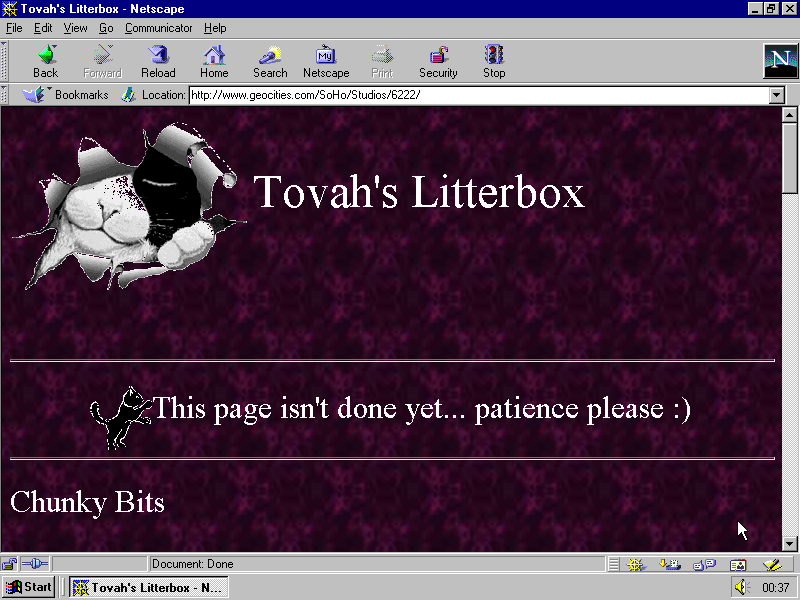
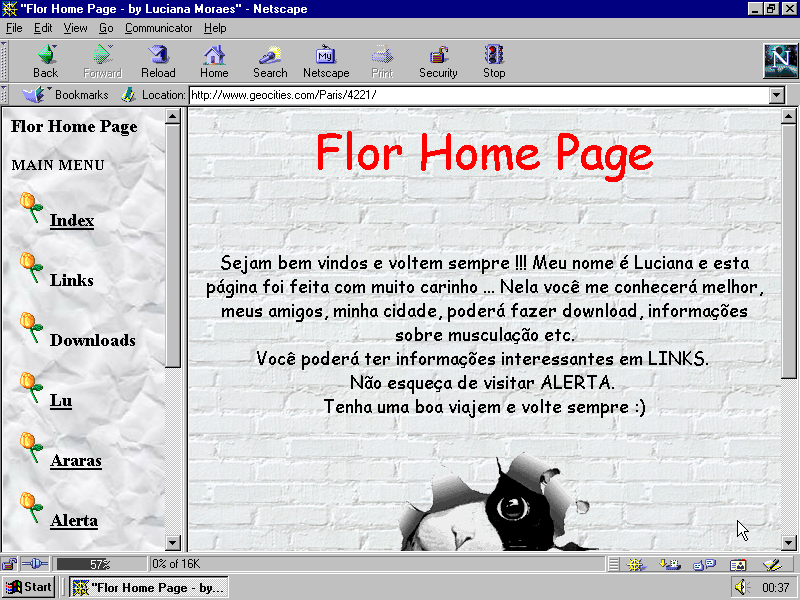
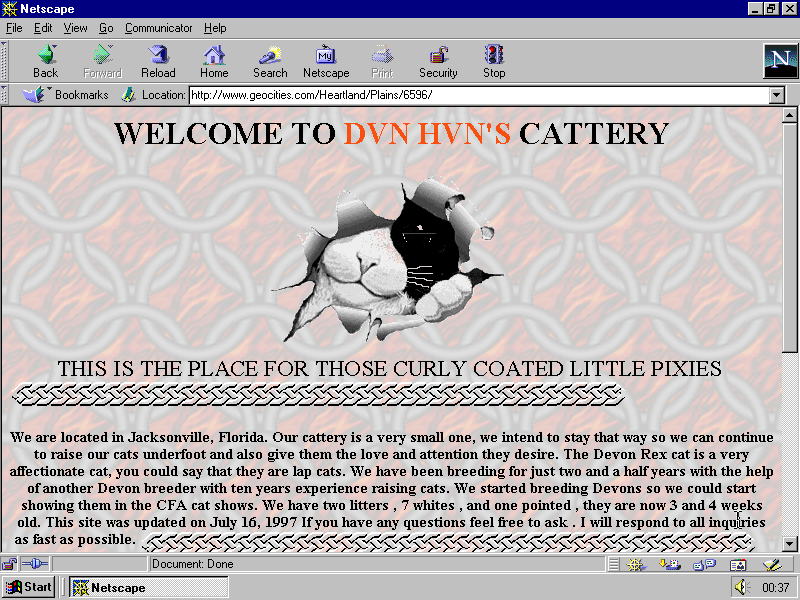
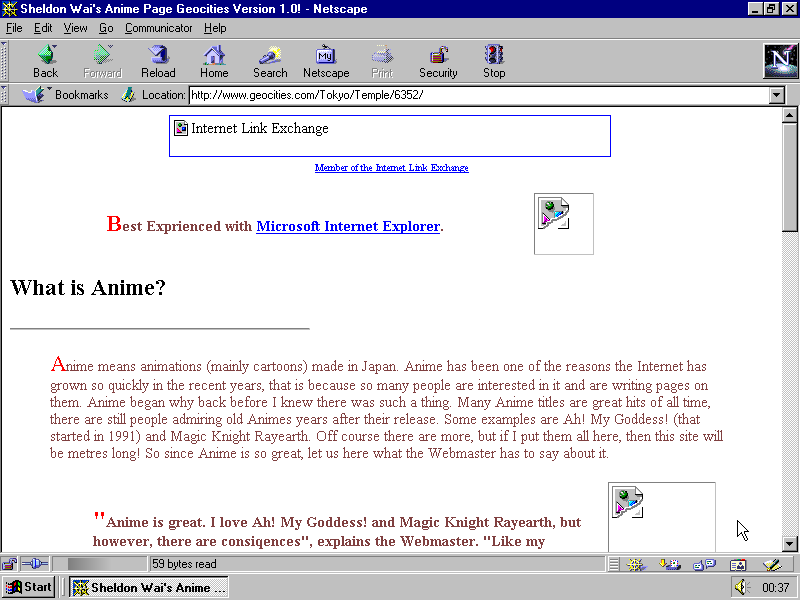
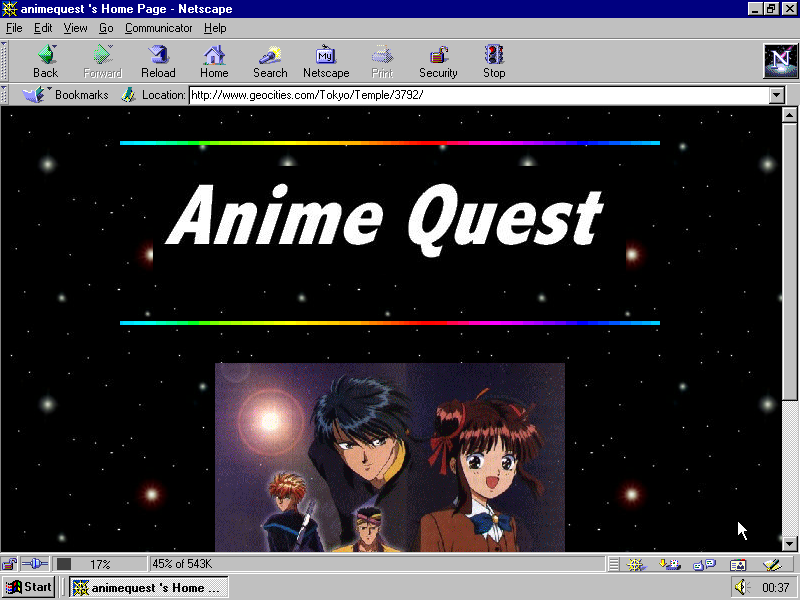
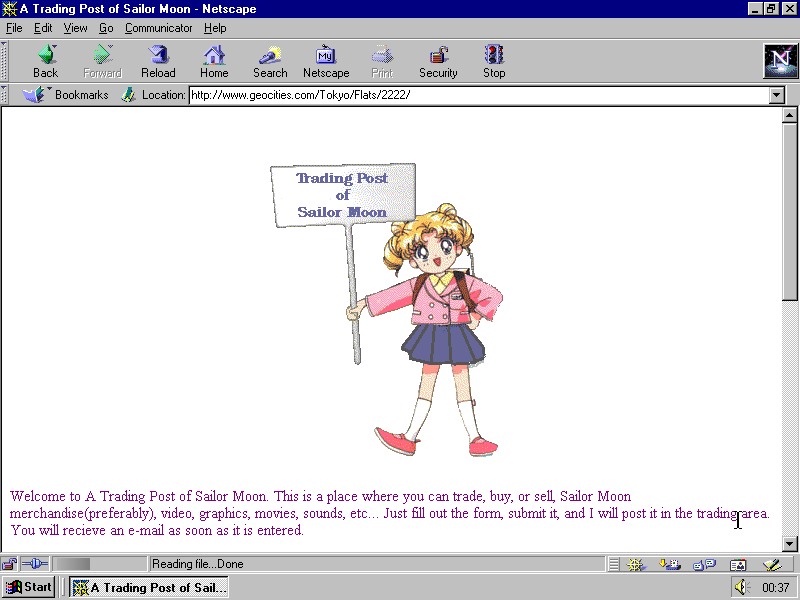
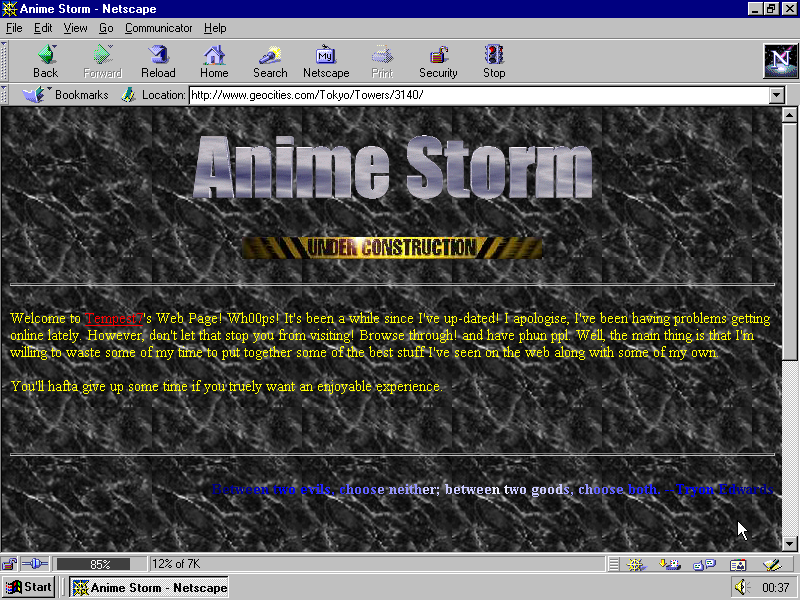
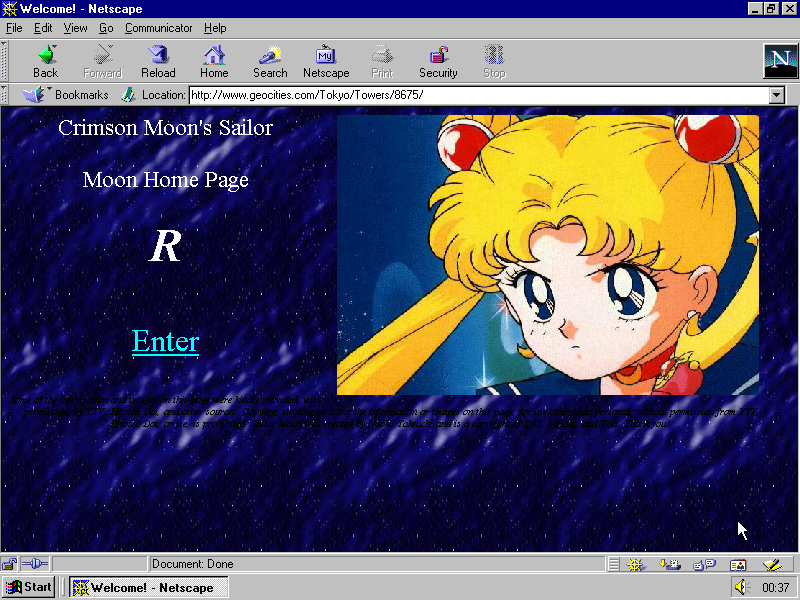
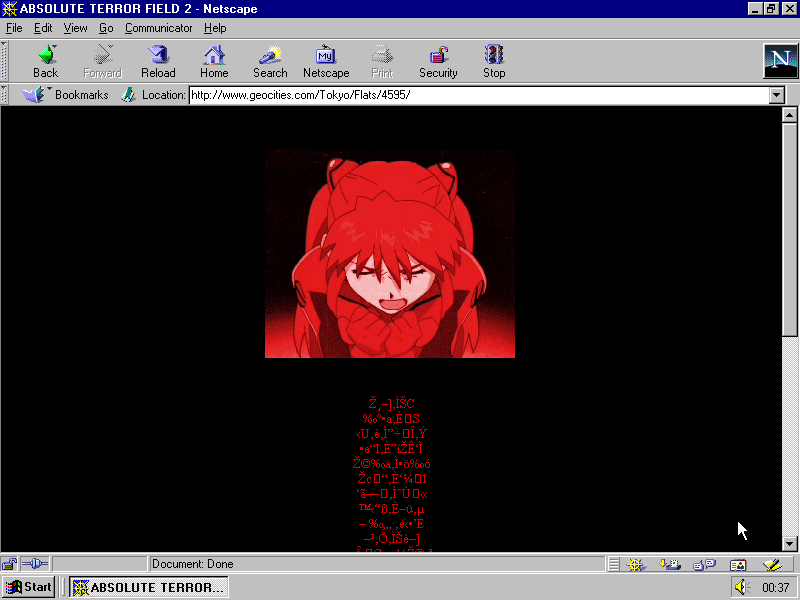
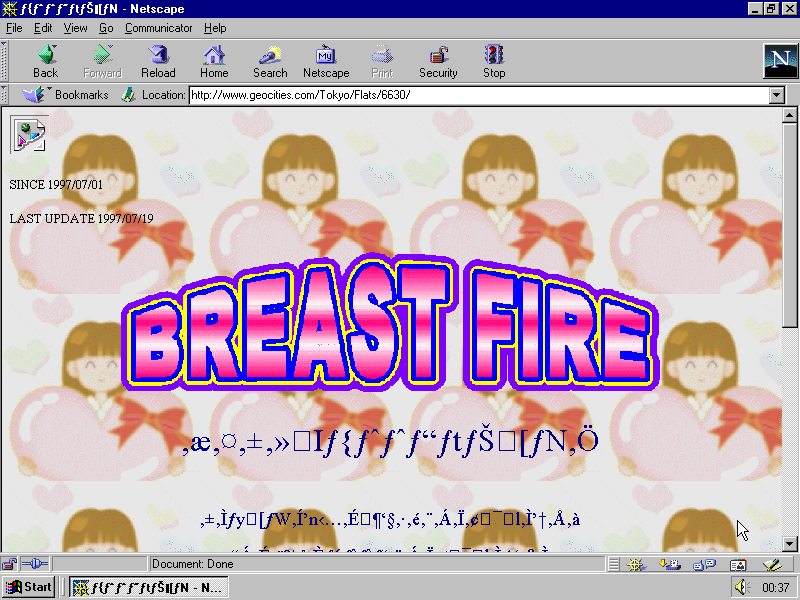
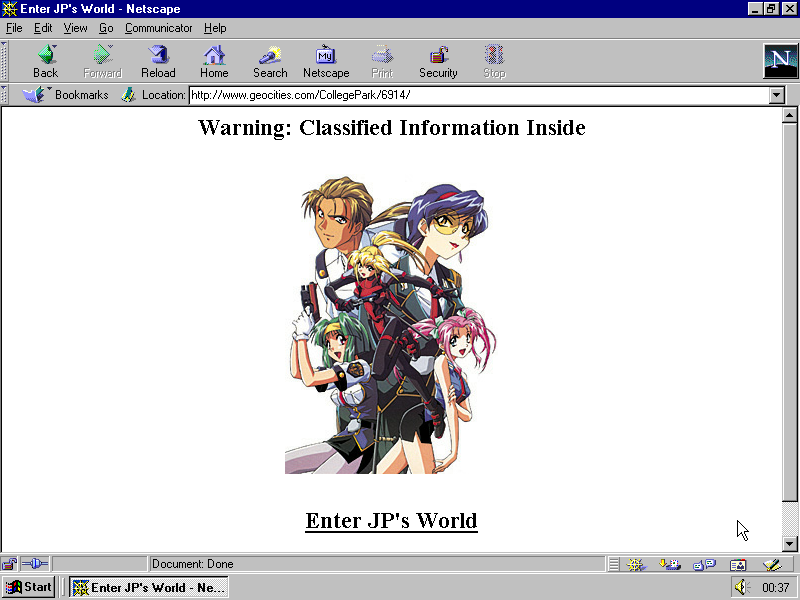
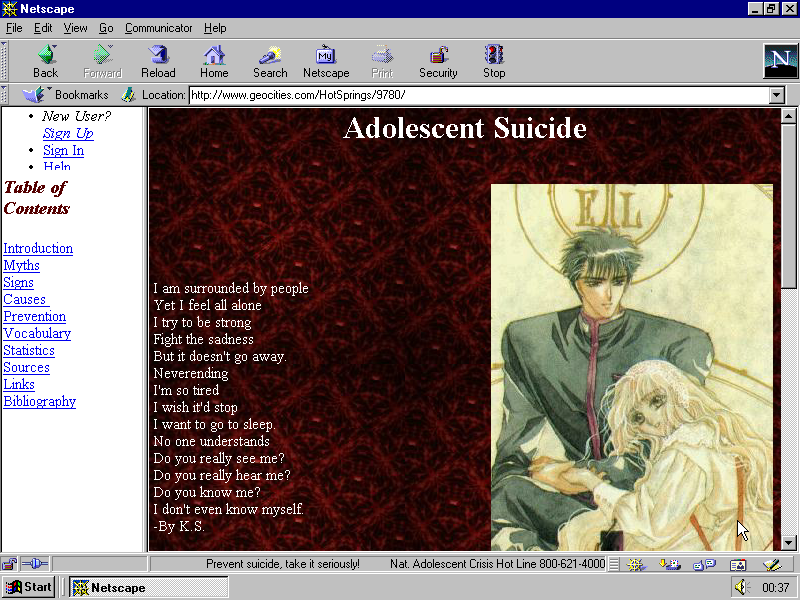
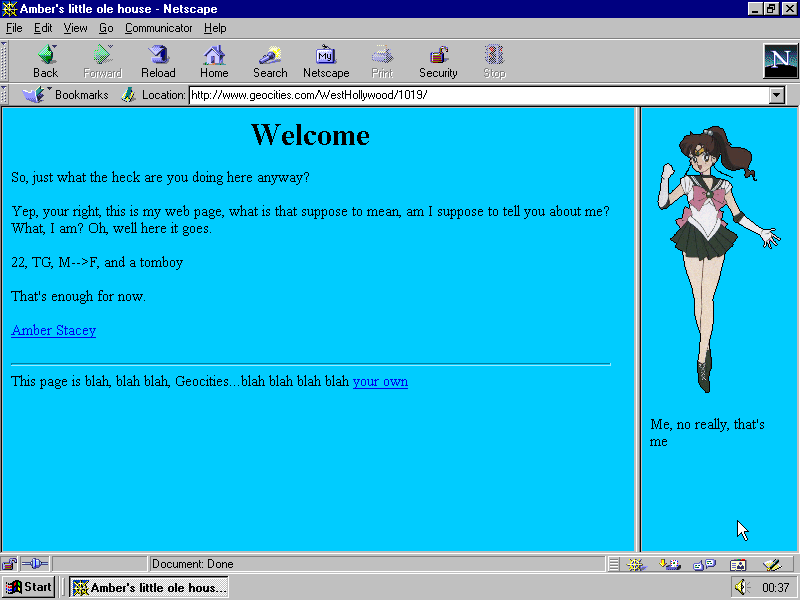
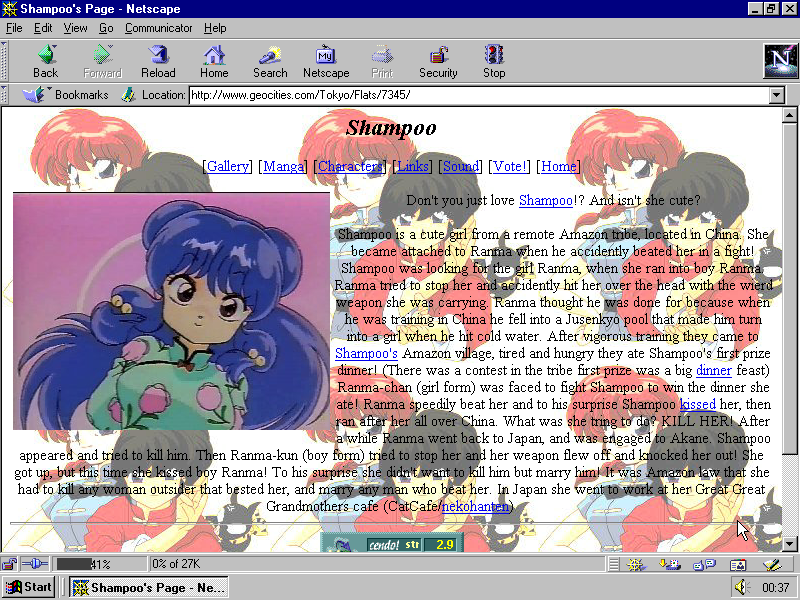
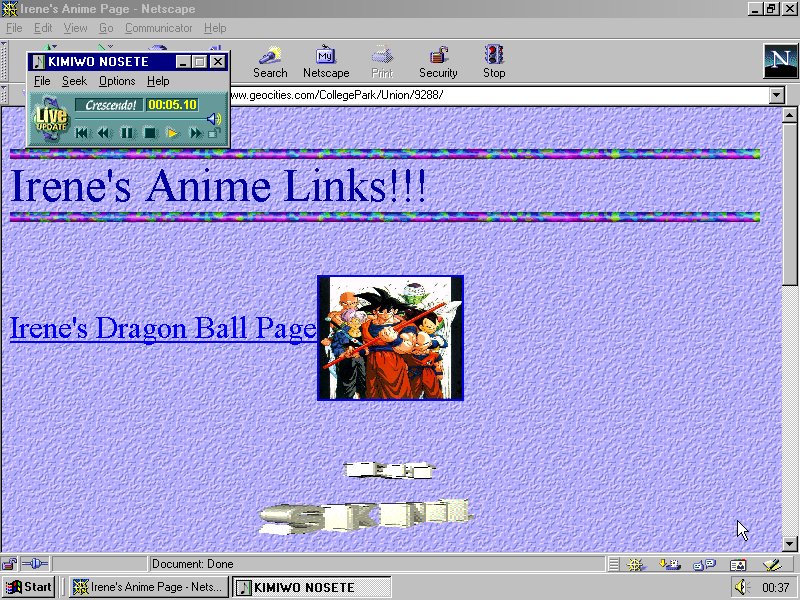
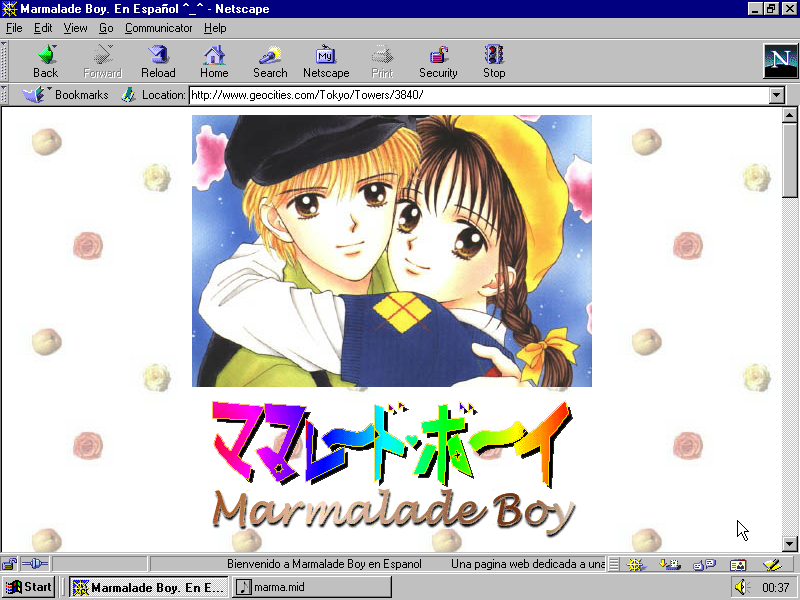
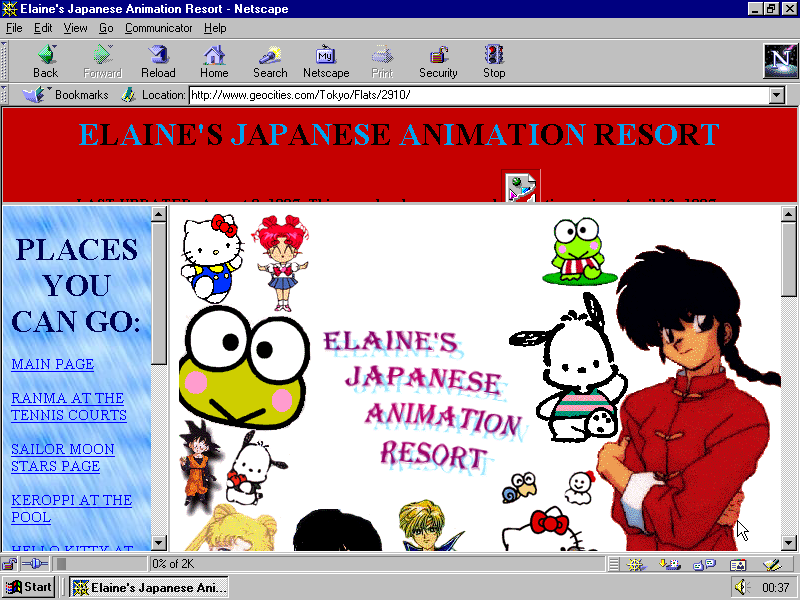
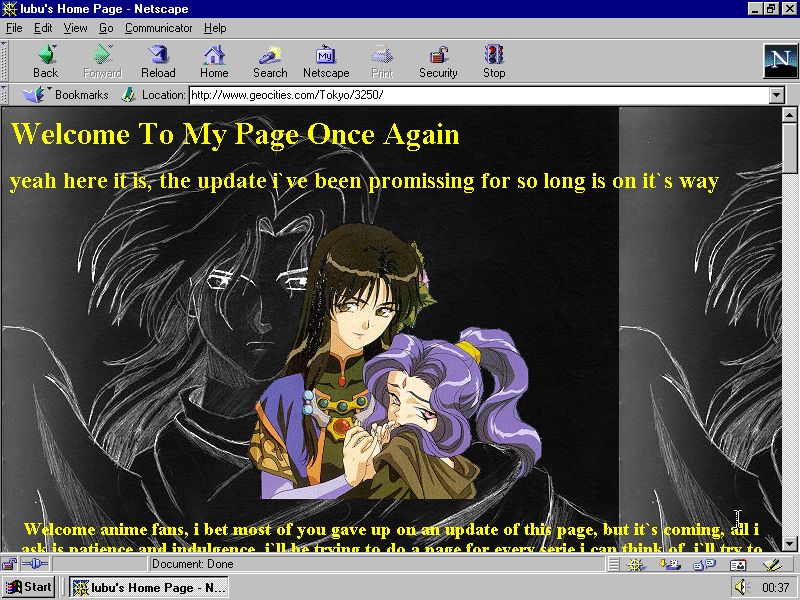
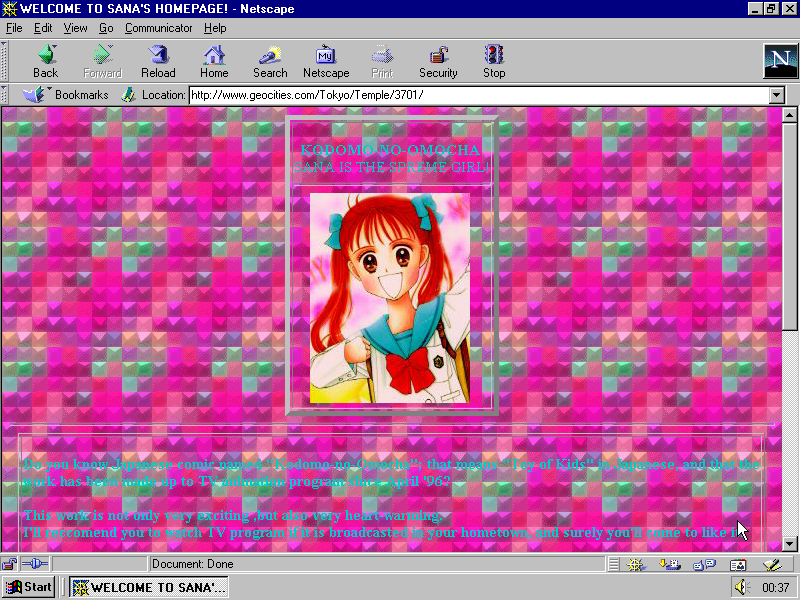


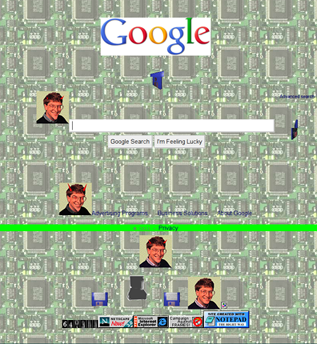
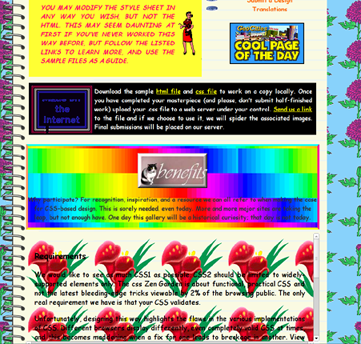
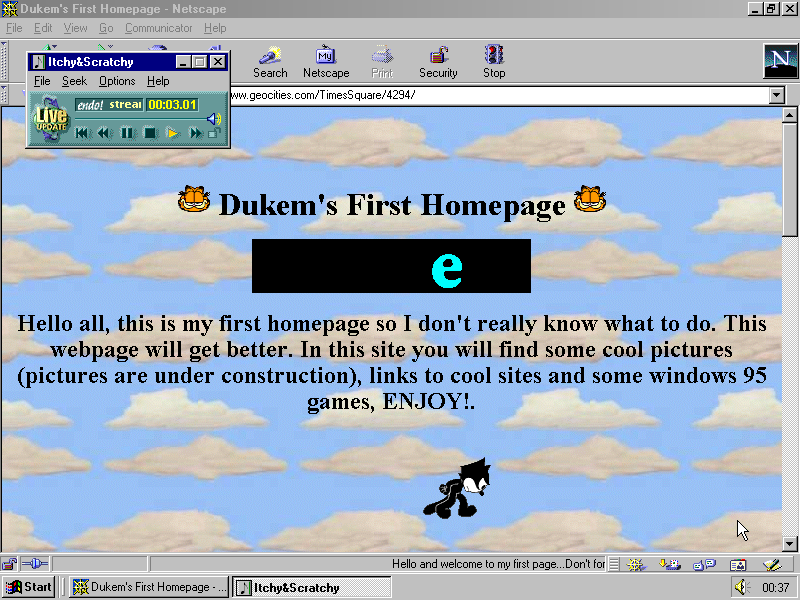
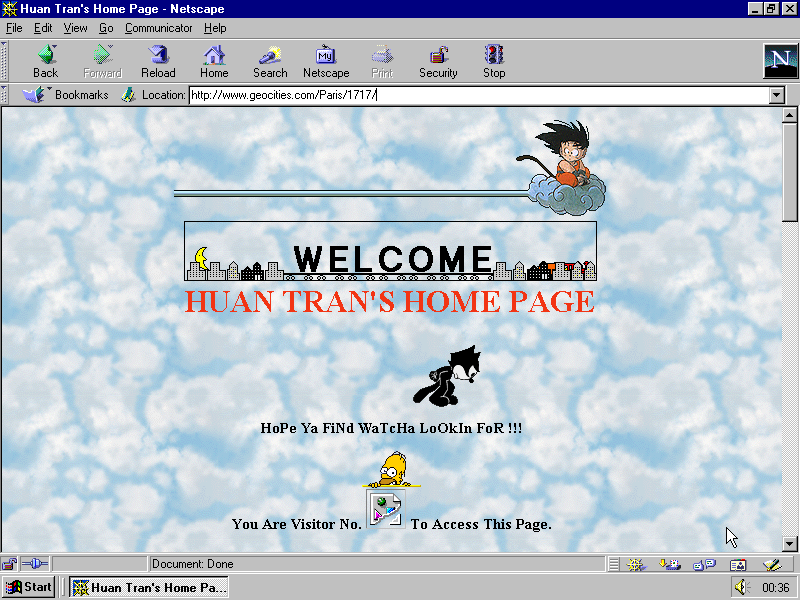
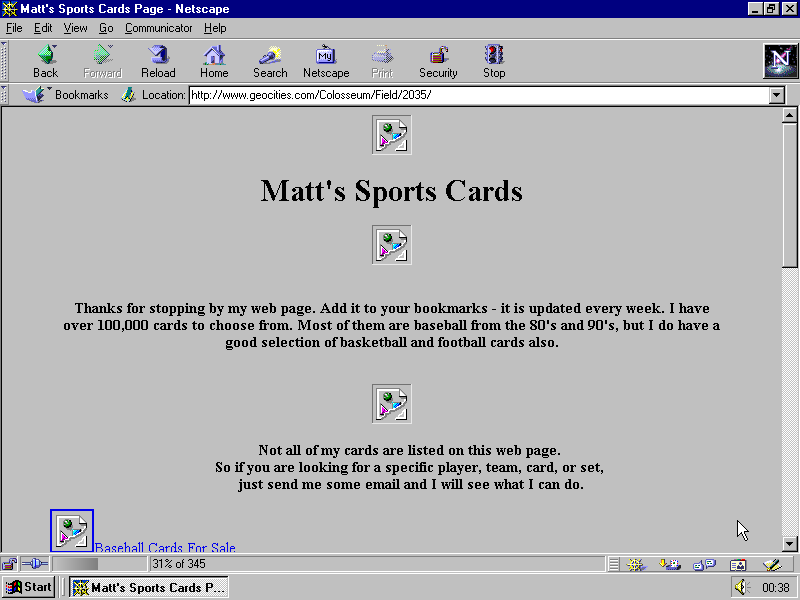
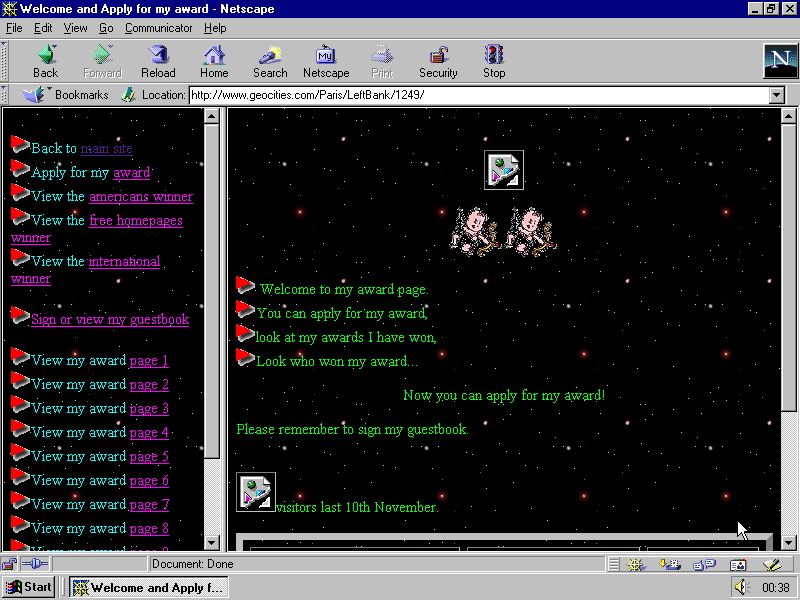
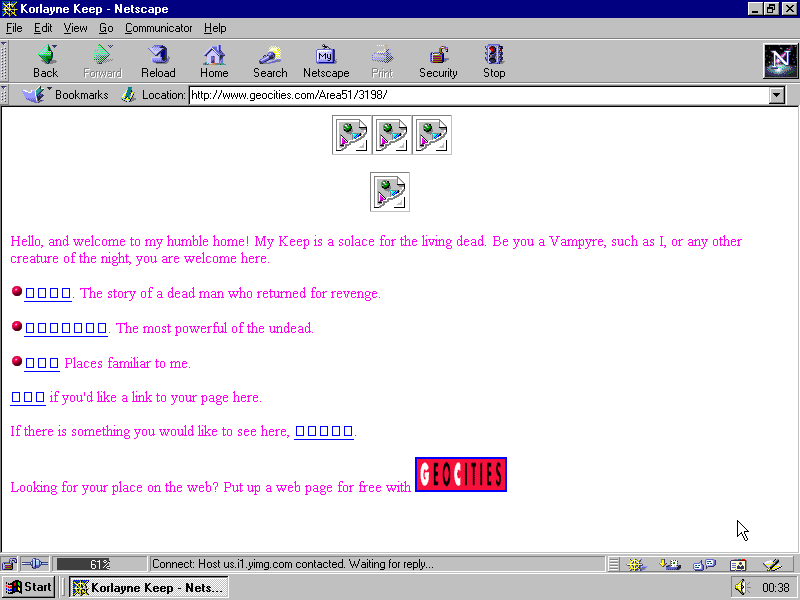
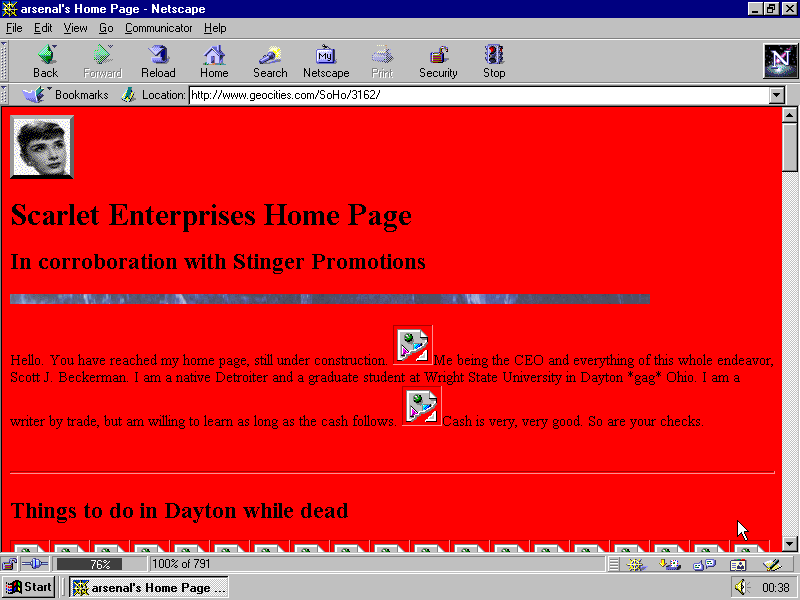
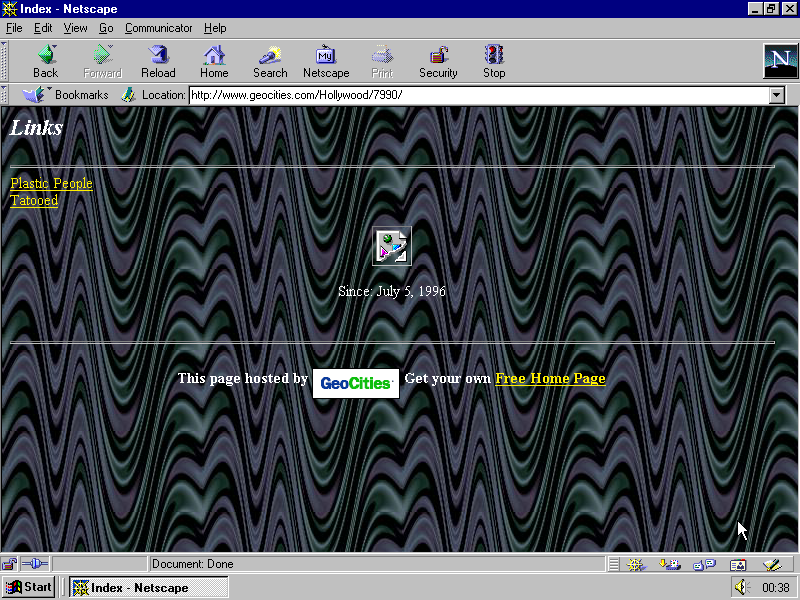
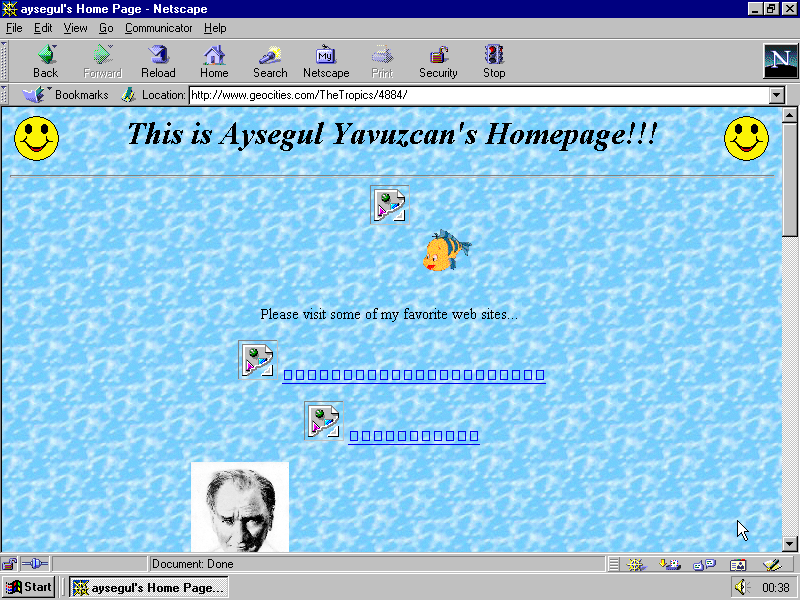
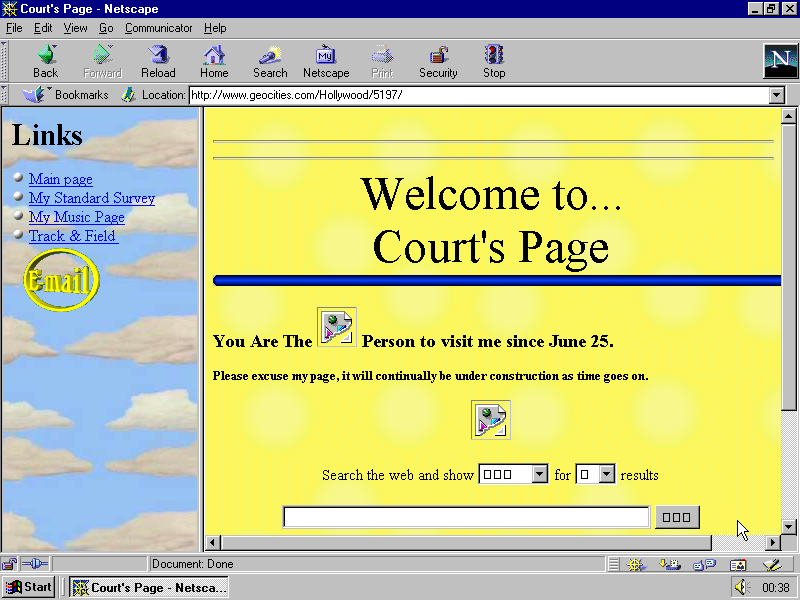
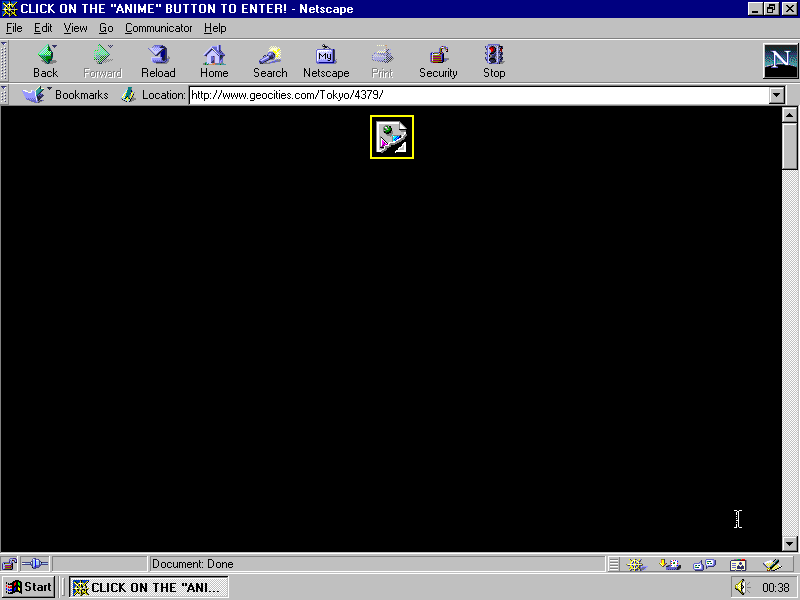
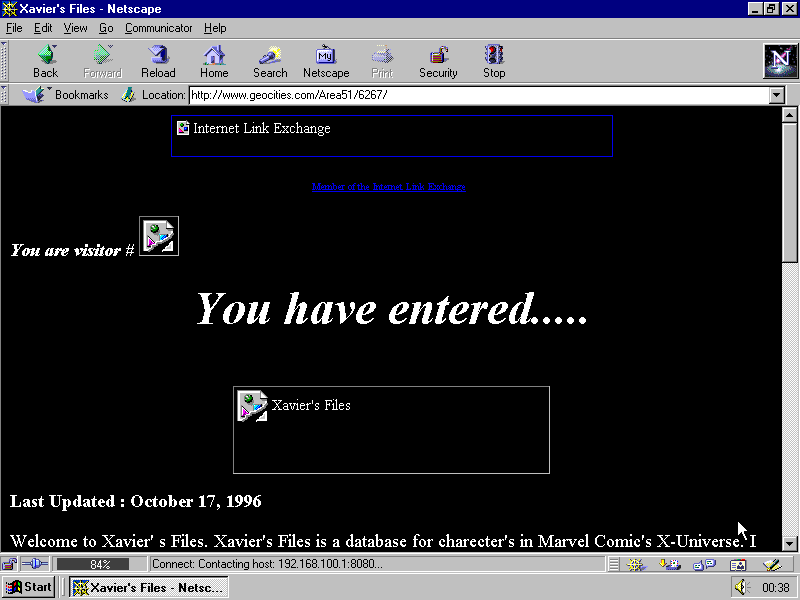
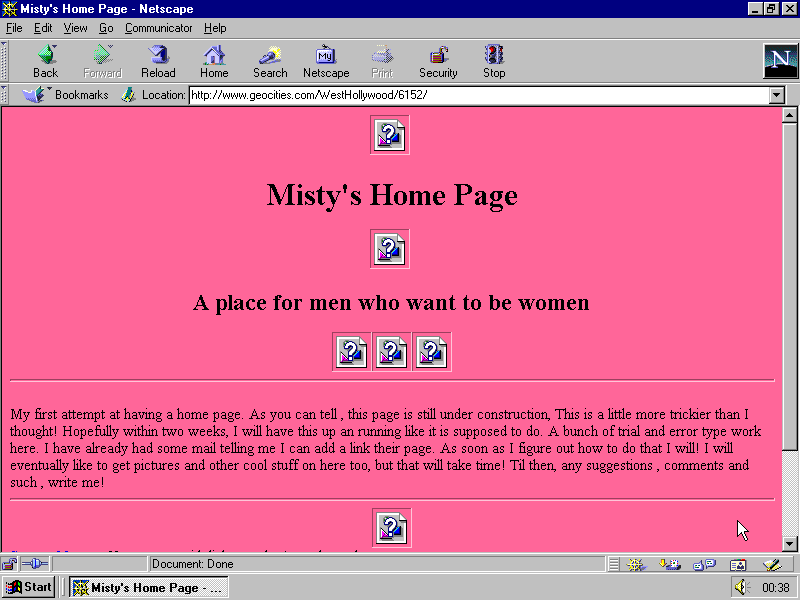
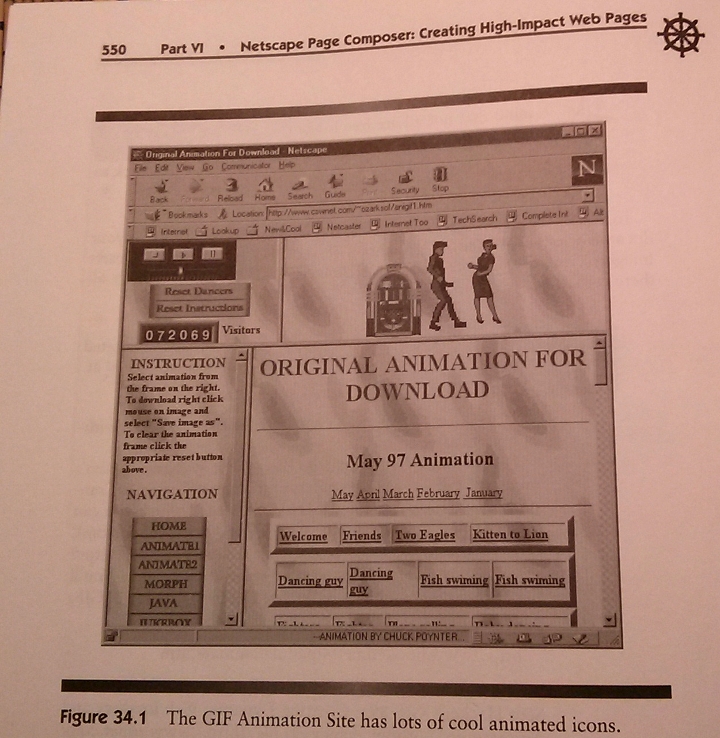
 in previous posts:
in previous posts: